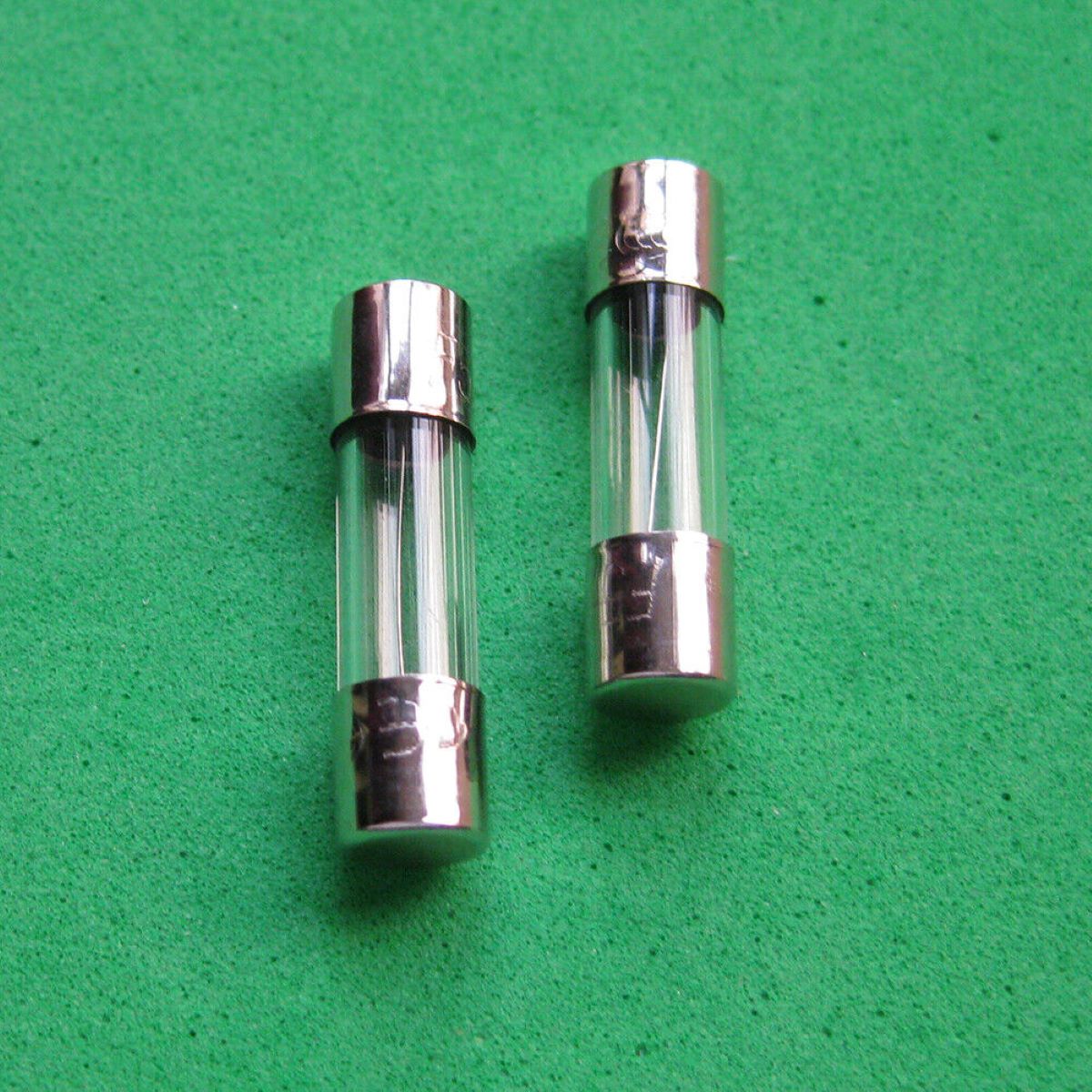Home>Furniture & Design>Interior Design Trends>What Does A Blown Glass Fuse Look Like


Interior Design Trends
What Does A Blown Glass Fuse Look Like
Modified: August 25, 2024
Discover the latest interior design trends with a blown glass fuse. Explore unique styles and innovative concepts for your home decor.
(Many of the links in this article redirect to a specific reviewed product. Your purchase of these products through affiliate links helps to generate commission for Storables.com, at no extra cost. Learn more)
Introduction
Understanding the intricacies of blown glass fuses is crucial for maintaining the safety and functionality of electrical systems. A blown glass fuse, often a small, yet pivotal component in electrical circuits, serves as a protective barrier against electrical overloads. When a circuit experiences excessive current flow, the fuse is designed to melt, interrupting the electrical current and preventing potential damage to the circuit or connected devices.
In this comprehensive guide, we will delve into the characteristics of blown glass fuses, explore the telltale signs of a blown fuse, and provide insights into identifying this critical component. By the end of this article, you will have a clear understanding of how to recognize a blown glass fuse and take the necessary steps to address the issue effectively.
Let's embark on this enlightening journey to unravel the mysteries of blown glass fuses and equip ourselves with the knowledge to navigate the intricate world of electrical systems.
Key Takeaways:
- Blown glass fuses are crucial for electrical safety, melting to stop overcurrent. Look for power loss, discoloration, or fused metal to identify a blown fuse.
- To identify a blown glass fuse, visually inspect for damage, use built-in indicators, or test with a multimeter. Prompt replacement ensures safe electrical operation.
Read more: What Does A Champagne Glass Look Like
What is a blown glass fuse?
A blown glass fuse is a fundamental component of electrical circuits, designed to safeguard against overcurrent situations that could potentially lead to damage or hazards. Comprising a slender glass tube with metal caps on both ends, the blown glass fuse contains a thin strip of metal, typically made of silver, copper, or aluminum, which serves as the conducting element. This strip is calibrated to allow a specific amount of current to pass through the circuit. When the current exceeds this predetermined threshold, the strip heats up and eventually melts, breaking the circuit and effectively interrupting the flow of electricity.
The blown glass fuse operates on the principle of thermal protection, where the melting of the conducting strip prevents excessive current from reaching the connected devices or components. This crucial function not only safeguards the electrical system but also mitigates the risk of fire or damage caused by overloading.
In addition to their protective role, blown glass fuses are available in various current ratings and physical dimensions to accommodate diverse electrical applications. This versatility allows them to be integrated into a wide range of devices, from household appliances to automotive systems, providing essential protection against electrical faults and ensuring the safe operation of the connected equipment.
Furthermore, the transparent nature of the glass tube enables visual inspection of the fuse, allowing for quick identification of a blown fuse without the need for specialized equipment. This transparency also facilitates the detection of any discoloration or damage, serving as a visual indicator of a blown fuse.
In essence, a blown glass fuse serves as a crucial safety mechanism within electrical circuits, offering reliable protection against overcurrent events and contributing to the overall resilience and functionality of electrical systems. Understanding the role and characteristics of blown glass fuses is essential for maintaining the integrity and safety of electrical installations across various domains.
Signs of a blown glass fuse
Identifying the signs of a blown glass fuse is pivotal in troubleshooting electrical issues and ensuring the smooth operation of circuits and devices. When a blown glass fuse is present within a circuit, several distinct indicators emerge, signaling the need for inspection and potential replacement. By recognizing these signs, individuals can promptly address the underlying electrical fault and restore the functionality of the affected system. Here are the key signs of a blown glass fuse:
-
Complete Loss of Power: One of the most evident signs of a blown glass fuse is the complete loss of power in the connected device or circuit. When a fuse blows due to overcurrent, the electrical circuit is interrupted, resulting in the sudden cessation of power supply to the associated equipment. This abrupt loss of power serves as a clear indication that a blown fuse may be the underlying cause of the issue.
-
Burnt or Discolored Appearance: Upon visual inspection, a blown glass fuse may exhibit visible signs of damage, such as a burnt or discolored appearance. The presence of blackened areas or discoloration on the glass tube indicates that the fuse has experienced excessive heat, potentially leading to the melting of the conducting strip. This visual cue serves as a compelling indicator of a blown fuse and prompts further investigation into the root cause of the electrical fault.
-
Fused Metal Element: In some cases, a blown glass fuse may reveal a visibly melted or fused metal element within the transparent tube. The distortion or deformation of the conducting strip inside the fuse is a definitive sign of overcurrent, indicating that the fuse has effectively performed its protective function by interrupting the circuit due to excessive heat buildup.
-
Blown Fuse Indicator: Certain blown glass fuses are equipped with built-in indicators, such as a small window that changes color when the fuse blows. This feature provides a convenient visual cue, allowing users to quickly identify a blown fuse without the need for extensive troubleshooting.
-
Inoperative Equipment: When electrical devices or components connected to a circuit cease to function despite being in operational condition, a blown glass fuse within the circuit may be the underlying cause. The inability of the equipment to operate as expected serves as a practical indicator of a potential blown fuse, prompting users to inspect the fuse for signs of damage or failure.
By recognizing these signs of a blown glass fuse, individuals can effectively diagnose electrical issues and take appropriate measures to address the underlying faults. Prompt identification and replacement of blown fuses contribute to the safe and reliable operation of electrical systems, ensuring the uninterrupted functionality of connected devices and equipment.
How to identify a blown glass fuse
Identifying a blown glass fuse is a critical skill that empowers individuals to swiftly address electrical faults and restore the functionality of circuits and devices. By leveraging visual cues and practical inspection techniques, one can effectively pinpoint a blown fuse within an electrical system. Here's a comprehensive guide on how to identify a blown glass fuse:
Visual Inspection:
Visual examination of the blown glass fuse is a primary method for identification. Begin by locating the fuse within the circuit and carefully inspecting its transparent glass tube. Look for any visible signs of damage, such as discoloration, blackened areas, or a melted metal element inside the fuse. These visual cues serve as compelling indicators of a blown fuse and prompt further investigation into the underlying cause of the electrical fault.
Read more: What Does Sea Glass Look Like
Built-in Indicators:
Some blown glass fuses are equipped with built-in indicators, such as a small window that changes color when the fuse blows. This feature provides a convenient visual cue, allowing users to quickly identify a blown fuse without the need for extensive troubleshooting. If the fuse exhibits a color change or any other built-in indicator, it signifies that the fuse has blown and requires replacement.
Testing with a Multimeter:
For a more precise assessment, testing the blown glass fuse with a multimeter can provide valuable insights into its condition. Set the multimeter to the continuity or resistance mode and carefully remove the fuse from the circuit. Place the multimeter probes on both ends of the fuse and observe the reading. A blown fuse will typically show infinite resistance or no continuity, indicating that the conducting strip inside the fuse has melted and interrupted the circuit.
Replacement:
Once a blown glass fuse has been identified, it is crucial to replace it with a new fuse of the appropriate rating. Select a replacement fuse with the same current rating and physical dimensions to ensure compatibility with the electrical circuit. Carefully install the new fuse, taking care to follow the manufacturer's guidelines and safety precautions.
By employing these methods for identifying a blown glass fuse, individuals can effectively diagnose electrical faults and take the necessary steps to restore the integrity and functionality of the affected circuits. This proactive approach to fuse identification and replacement contributes to the safe and reliable operation of electrical systems, ensuring the continuous functionality of connected devices and equipment.
Conclusion
In conclusion, understanding the characteristics and signs of a blown glass fuse is essential for maintaining the safety and functionality of electrical systems. Blown glass fuses, with their transparent glass tubes and conducting elements, serve as critical components that protect circuits and devices from overcurrent events. The visual indicators of a blown fuse, including a complete loss of power, burnt or discolored appearance, fused metal element, and inoperative equipment, provide valuable cues for identifying and addressing electrical faults.
By recognizing these signs and employing visual inspection, built-in indicators, and multimeter testing, individuals can effectively identify blown glass fuses within electrical circuits. Prompt identification of blown fuses enables timely replacement with new fuses of the appropriate rating, ensuring the uninterrupted operation of connected devices and equipment.
Furthermore, the transparent nature of blown glass fuses facilitates visual inspection, allowing users to quickly assess the condition of the fuse without the need for specialized equipment. This transparency not only simplifies the identification of blown fuses but also promotes proactive maintenance and troubleshooting of electrical systems.
In the realm of electrical safety and maintenance, the ability to identify and replace blown glass fuses is a valuable skill that empowers individuals to address electrical faults and uphold the reliability of electrical installations. Whether in residential, commercial, or automotive settings, the knowledge and proficiency in identifying blown glass fuses contribute to the overall resilience and safety of electrical systems.
As we navigate the intricate world of electrical circuits and components, the awareness of blown glass fuses and their telltale signs equips us with the insights to safeguard against potential hazards and ensure the smooth operation of electrical systems. By embracing a proactive approach to fuse identification and replacement, individuals can uphold the integrity and functionality of electrical installations, fostering a secure and efficient environment for diverse applications.
In essence, the ability to identify and address blown glass fuses underscores the importance of proactive maintenance and safety within the realm of electrical systems, reinforcing the resilience and reliability of circuits and devices across various domains. With this knowledge at hand, individuals are empowered to navigate the complexities of electrical systems with confidence and competence, ensuring the continuous functionality and safety of connected equipment and installations.
Frequently Asked Questions about What Does A Blown Glass Fuse Look Like
Was this page helpful?
At Storables.com, we guarantee accurate and reliable information. Our content, validated by Expert Board Contributors, is crafted following stringent Editorial Policies. We're committed to providing you with well-researched, expert-backed insights for all your informational needs.















0 thoughts on “What Does A Blown Glass Fuse Look Like”